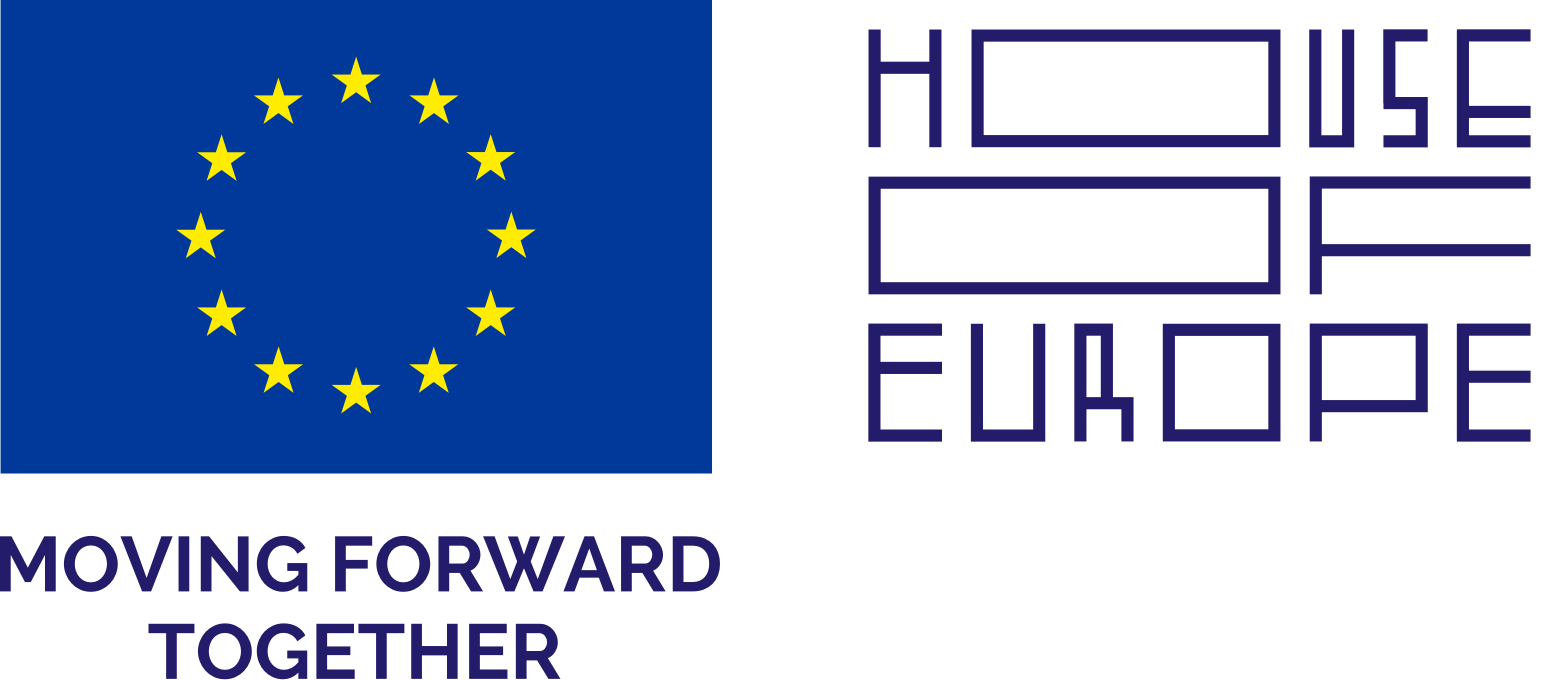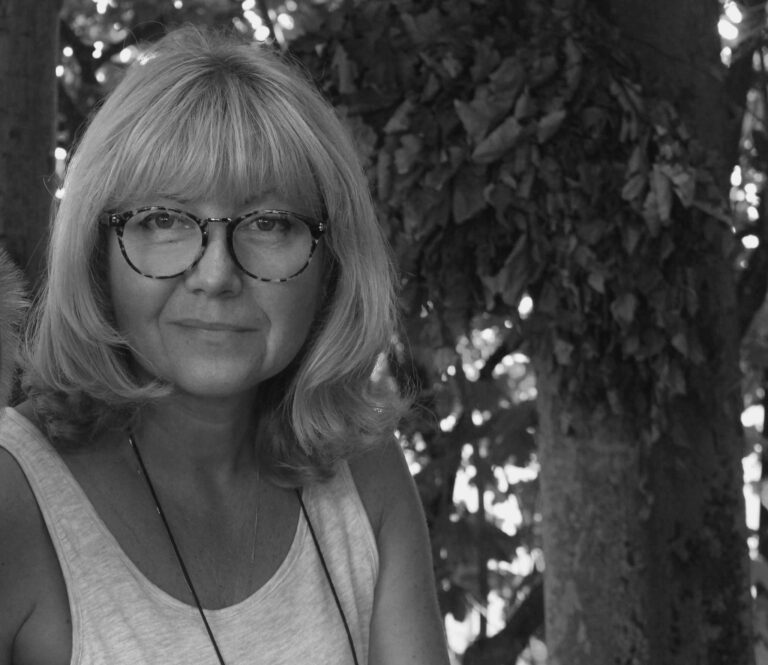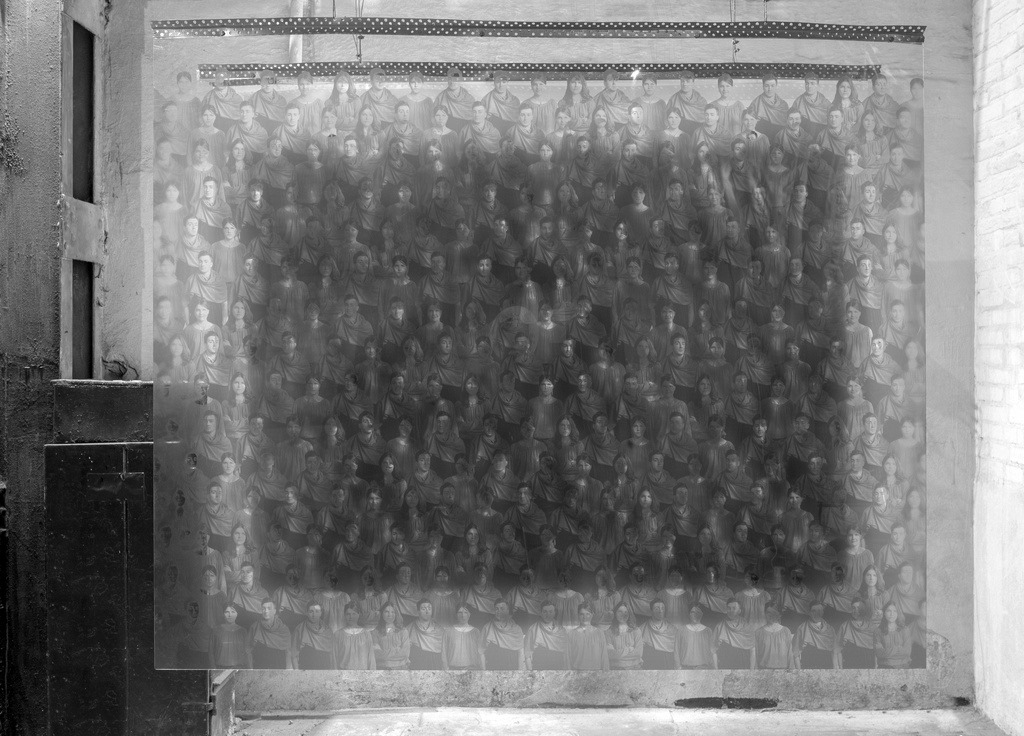

– born in Minsk in 1960. The range of her art methods includes installation, video art, and painting. Studied at the Belarusian Academy of Arts, the Department of Painting. The beginning of her artistic life happily coincided with political and social changes. It was the era of Perestroika when the Soviet Union collapsed, and Belarus gained independence in 1991 – the times of change bringing freedom, access to information, open borders, and the possibility to experiment. That period also included her years of teaching at the Minsk Art College, where, with a group of teachers, she tried to modernize the outdated system of art education. Lives and works in Minsk.
Before attempting to explain what artistic occupation in the contemporary world means to me and who the artist is, I would like to quote Boris Groys who compares art to sports. Imagine several artists joining a race – here they are standing at the start line; the signal goes off, everyone begins the race and there is only one person to take the opposite direction, against any rules. In art, this is the only way possible – to run alone and against the rules.
I often wonder what is primary for the artist, what the root cause of the questions we pose to modernity is, what underlies the issues we are concerned with.
Reality, society, or the individual – for me, it is always about the individual and the processes the individual lives through in a certain imposed reality that dictates its rules, regardless of our will. Can we generally comprehend what is happening in a situation of fatality? Are we able to grasp the reality, which, in its turn, is shaped by the society, and the society – by people? And can free action actually exist under such conditions? These are the questions I address both politics and art.
1. The Escape project123456.
All my art focuses on my interest and desire to explore the forms and changes of time in our consciousness. There are three dimensions of time that can coexist and be simultaneously experienced in our mind. The past takes the form of memories, future – of aspirations and dreams, and present – of the moment of the elusive “now”.
The French word souvenir means both an object presented as a reminder of something and a memory reduced to a souvenir, an image of the past that has fallen out of its temporal context and started living its own life in recollections – sometimes idealized, altered and reinvented, a snapshot of a period disconnected from the reality it had originated in.
I often refer to an old photograph, to a document, seeing it as a frozen unit of time – a fragment of the unfamiliar context where all the subsequent temporal links got broken. The photographic image only bears the function of a souvenir, a reminder of the distant past that lost its content a long time ago. It is a hollow mold of time, a shell of the affairs of the past. I use shots of strangers who got together for reasons and in the time I know nothing of, and neither am I aware of what happened to them later. In my works, the fragments of photographs are transformed into the pictorial images of porcelain sculptures – the souvenirs with a message different from the original one and depicting events whose objective meaning was long lost.
2. Series Souvenir, Archive78910.
Any object or phenomenon bears certain properties and has a function. A book is there for us to be read and flipped through. Time is fluid. When a phenomenon or an object loses its properties, we feel shocked. In our minds, the past loses its fluid quality. The past bears more resemblance to immobile geological strata.
3. Sculptures Diaries, Personal File11121314.
I approach the present as a zone of zero time polarity where one always has a choice. It is a borderland where the past no longer exists and the future has not yet come. It is stage curtains that divide the space and time into “before” and “after”. In my installation Intermission15, I split the space into two parts with the stage curtains depicting thousands of WWI soldiers who gathered for this shot during the intermission. This work captures the moment of waiting for the performance in a situation where we know neither what the first act was about nor the plot of the next one that is to follow.
4. Installation Intermission15.
And now what I have to say about the future. Humanity is making great strides in the struggle to considerably extend life expectancy and defeat ageing. It is scary to think what might come of it. Family Tree or Neglected Ageing1617 is my installation on a possible future. “The term neglected ageing refers to an ageing rate hardly statistically different from zero, and to non-ageing – a zero correlation between age and death probability. In other words, cases of potential immortality are meant for species whose individual representatives demonstrate enormous maximum lifespans, thus making signs of ageing impossible to visually discern.”
And Haruki Murakami: “To achieve immortality, you must not increase the time you have, but rather divide it indefinitely.”
5. Installation Family Tree1617.
Edited by Anna Karpenko and Sophia Sadovskaya (2022).
1Image: Natalya Zaloznaya, Escape 1, 2018, 140х100, acrylic on canvas. Courtesy of the artist.2Image: Natalya Zaloznaya, Escape 3, 2018, 140х100, acrylic on canvas. Courtesy of the artist.
3Image: Natalya Zaloznaya, Escape, Installation, 2017. Courtesy of the artist.
4Image: Natalya Zaloznaya, Escape, Installation, 2017. Courtesy of the artist.
5Image: Natalya Zaloznaya, Escape 12, 13, 14, 15, 2017. 50х70, 50х60, acrylic on canvas. Courtesy of the artist.
6Image: Natalya Zaloznaya, Escape 5, 2016, 120х90, acrylic on canvas. Courtesy of the artist.
7Image: Natalya Zaloznaya, Flying, 2017, 110x160, acrylic on canvas. Courtesy of the artist.
8Image: Natalya Zaloznaya, Souvenir 4, 2019, 110х80, acrylic on canvas. Courtesy of the artist.
9Image: Natalya Zaloznaya, Swimming, 2017, 110x140, acrylic on canvas. Courtesy of the artist.
10Image: Natalya Zaloznaya, Souvenir 1, 2019, 130x170, acrylic on canvas. Courtesy of the artist.
11Image: Natalya Zaloznaya, Diary, 2011, paper. Courtesy of the artist.
12Image: Natalya Zaloznaya, Diary, 2011, 43x27x18, paper (fragment). Courtesy of the artist.
13Image: Natalya Zaloznaya, Diary, 2004, 35x89x40, paper, wood. Courtesy of the artist.
14Image: Natalya Zaloznaya, Diary, 2004, 35x89x40, paper, wood (fragment). Courtesy of the artist.
15Image: Natalya Zaloznaya, Intermission, 2016, Installation, 300x600, printing on textiles. Courtesy of the artist.
16Image: Natalya Zaloznaya, Genealogical Tree, 2019, 150x250, printing on plexiglass. Photo by Viktoryia Kharytonava. Courtesy of the artist.
17Image: Natalya Zaloznaya, Genealogical Tree, 2019, 150x250, printing on plexiglass. Photo by Viktoryia Kharytonava. Courtesy of the artist.

– нарадзілася ў Мінску ў 1960 годзе.У ей творчы арсенал уваходзіць праца з інсталяцыяй, відэаартам і з жывапісам. Вучылася ў Беларускай акадэміі мастацтваў на аддзяленні жывапісу. Пачатак творчага шляху шчасліва супаў з палітычнымі і сацыяльнымі зменамі. Гэта была эпоха перабудовы, час распаду Савецкага Саюза і здабыцця незалежнасці Беларусі ў 1991 годзе. Эпоха перамен, якая нясе з сабой свабоду, даступнасць інфармацыі, адкрытасць межаў, магчымасць эксперыменту. Гэта і шчаслівыя гады выкладання ў Мінскім мастацкім вучылішчы, дзе група выкладчыкаў спрабавала мадэрнізаваць састарэлую сістэму мастацкай адукацыі.
Жыве і працуе ў Мінску.
Перш чым расказаць пра тое, што для мяне значыць прафесія мастака ў сучасным свеце і хто такі мастак, хочацца працытаваць Барыса Гройса, які параўноўвае мастацтва са спортам. Калі ўявіць, што некалькі мастакоў вырашылі спаборнічаць у кросе, выстраіліся ў адну лінію; пачуўся сігнал да старту, усе пабеглі наперад, а адзін пабег у іншым кірунку, насуперак усялякім правілам. У мастацтве толькі так і магчыма – бегчы аднаму і насуперак усялякім правілам.
Часта задаюся пытаннем, што першаснае для мастака, што з’яўляецца першапрычынай тых пытанняў, якія ён ставіць перад сучаснасцю, што зʼяўляецца крыніцай той праблематыкі, якая хвалюе мастака.
Рэальнасць, соцыум, грамадства або індывід. Для мяне наперадзе заўсёды стаіць індывід і тыя працэсы, якія пражывае асоба ў сітуацыі той ці іншай рэальнасці, якая навязана нам і якая дыктуе нам свае правілы, незалежна ад нашага волевыяўлення. Ці маем мы магчымасць усведамлення таго, што адбываецца ў сітуацыі фатальнасці, магчымасць усведамлення рэальнасці, якая, у сваю чаргу, створана соцыумам, а соцыум – чалавекам. І ці існуе магчымасць свабоднага валявога дзеяння ў гэтай сітуацыі. Гэта мае пытанні і да палітыкі, і да мастацтва.
1. Праект Уцёкі123456.
Уся мая творчасць засяроджана на цікавасці і жаданні даследаваць формы і змены часу ў нашай свядомасці. Ёсць тры часы. Яны могуць ужывацца і пражывацца ў нашай свядомасці адначасова. Мінулае – у форме ўспамінаў, будучыня – у планах і марах і сучаснасць – у моманце слаба ўлоўнага “зараз”.
Французскае слова souvenir азначае прадмет на памяць і ў той жа час успамін. Успамін, які сціснуўся да сувеніра. Карцінка з мінулага, якая выпала са свайго часовага кантэксту і ўжо жыве сваім жыццём ва ўспамінах, часам ідэалізаваная, перайначаная і надзеленая ўжо іншымі якасцямі, скрыншот адрэзка часу, не прывязанага да той рэальнасці, у якой ён паўстаў.
Я часта звяртаюся да старой фатаграфіі, да дакумента, разглядаючы іх як замарожаную адзінку часу, фрагмент незнаёмага кантэксту, дзе ўсе паслядоўныя часовыя сувязі парушаныя, а фатаграфічны здымак нясе ў сабе толькі функцыю сувеніра, напамінку аб далёкім часе, што даўно страціў свае значэнне. Гэта пусты злепак часу, абалонка даўно мінулых падзей. Я выкарыстоўваю здымкі, на якіх знаходзяцца незнаёмыя мне людзі, якія сустрэліся на фотакартцы ў невядомых для мяне абставінах у невядомы мне перыяд жыцця і з невядомай будучыняй. У маіх работах фрагменты фатаграфічных малюнкаў ператвараюцца ў маляўнічыя выявы парцалянавых скульптурак, у сувеніры на памяць, напоўненыя ўжо іншым зместам чым самі здымкі, на якіх захаваныя падзеі, абʼектыўны сэнс якіх даўно згублены.
2. Серыя работ Сувенір, Архіў78910.
Любая рэч або зʼява надзеленыя нейкімі ўласцівасцямі, якасцямі, нясуць у сабе функцыянальны сэнс. Кніга – для таго, каб мы маглі яе гартаць і чытаць. Час валодае ўласцівасцю цякучасці. Калі зʼява ці прадмет губляюць свае ўласцівасці або якасці, мы адчуваем шок. У нашай свядомасці мінулы час губляе сваю якасць цякучасці. Мінулае больш падобна на геалагічныя нерухомыя пласты.
3. Скульптуры Дзённікі, Асабовая справа11121314.
Аб сучаснасці. Сучаснасць я разглядаю як зону нулявой палярнасці часу, у межах якой заўсёды ёсць выбар. Памежжа, дзе мінулага яшчэ няма і будучыні пакуль няма. Тэатральную заслону, што дзеліць прастору і час на “да” і “пасля”. У сваёй інсталяцыі Антракт15 я дзялю прастору на дзве часткі тэатральнай заслонай, на якой надрукавана выява тысяч салдат Першай сусветнай вайны, якія сабраліся на гэты антракт для здымка. Чаканне спектакля ў сітуацыі, калі нам невядомы змест першага акту і мы не даведаемся змест наступнага.
4. Інсталяцыя Антракт15.
І аб будучыні. Чалавецтва прыкладае велізарныя намаганні ў барацьбе за радыкальнае падаўжэнне чалавечага жыцця і перамогу над старэннем. Што з гэтага можа атрымацца, страшна падумаць. Генеалагічнае дрэва або Пагардлівае старэнне1617 – мая інсталяцыя на тэму магчымай будучыні. Тэрмін “пагардлівае старэнне” азначае тэмп старэння, які цяжка статыстычна адрозніць ад нуля, а таксама “нестаренне” – нулявую карэляцыю паміж узростам і верагоднасцю смерці. Іншымі словамі, гаворка ідзе пра выпадкі патэнцыяльнай неўміручасці для відаў, асобіны якіх дэманструюць велізарную максімальную працягласць жыцця, з прычыны чаго немагчыма візуальна назіраць прыкметы іх старэння.
І Харукі Муракамі: “Каб дасягнуць неўміручасці, трэба не павялічваць адведзены табе час, а драбніць яго да бясконцасці”.
5. Інсталяцыя Генеалагічнае дрэва1617.
Рэдактаркі: Ганна Карпенка і Сафія Садоўская (2022)
1Выява: Наталля Залозная, Уцёкі 1, 2018, 140х100, палатно, акрыл. З дазволу мастачкі.2Выява: Наталля Залозная, Уцёкі 3, 2018, 140х100, палатно, акрыл. З дазволу мастачкі.
3Выява: Наталля Залозная, Уцёкі, Інсталяцыя. 2017. З дазволу мастачкі.
4Выява: Наталля Залозная, Уцёкі, Інсталяцыя. 2017. З дазволу мастачкі.
5Выява: Наталля Залозная, Уцёкі 12, 13, 14, 15, 2017, 50х70, 50х60, палатно, акрыл. З дазволу мастачкі.
6Выява: Наталля Залозная, Уцёкі 5, 2016 120х90, палатно, акрыл. З дазволу мастачкі.
7Выява: Наталля Залозная, Лятаючы, 2017, 110x160, палатно, акрыл. З дазволу мастачкі.
8Выява: Наталля Залозная, Сувенір 4, 2019. 110х80, палатно, акрыл. З дазволу мастачкі.
9Выява: Наталля Залозная, Плаванне, 2017, 110х140, палатно, акрыл. З дазволу мастачкі.
10Выява: Наталля Залозная, Сувенір 1, 2019. 130x170, палатно акрыл. З дазволу мастачкі.
11Выява: Наталля Залозная, Дзённік, 2011, папера. З дазволу мастачкі.
12Выява: Наталля Залозная, Дзённік, 2011, 43x27x18, папера (фрагмент). З дазволу мастачкі.
13Выява: Наталля Залозная, Дзённік, 2004, 35x89x40, папера, дрэва. З дазволу мастачкі.
14Выява: Наталля Залозная, Дзённік, 2004, 35x89x40, папера, дрэва (фрагмент). З дазволу мастачкі.
15Выява: Наталля Залозная, Антракт, Інсталяцыя 2016, 300x600, друк на тэкстылі. З дазволу мастачкі.
16Выява: Наталля Залозная, Генеалагічнае дрэва, 2019, 150x250, друк на аргшкле. Фота Вікторыі Харытонавай. З дазволу мастачкі.
17Выява: Наталля Залозная, Генеалагічнае дрэва, 2019, 150x250, друк на аргшкле. Фота Вікторыі Харытонавай. З дазволу мастачкі.